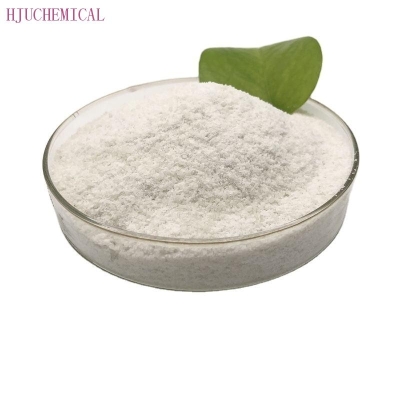-
Categories
-
Pharmaceutical Intermediates
-
Active Pharmaceutical Ingredients
-
Food Additives
- Industrial Coatings
- Agrochemicals
- Dyes and Pigments
- Surfactant
- Flavors and Fragrances
- Chemical Reagents
- Catalyst and Auxiliary
- Natural Products
- Inorganic Chemistry
-
Organic Chemistry
-
Biochemical Engineering
- Analytical Chemistry
- Cosmetic Ingredient
-
Pharmaceutical Intermediates
Promotion
ECHEMI Mall
Wholesale
Weekly Price
Exhibition
News
-
Trade Service
In a study published this week in Advanced Materials, engineers at the University of California, Irvine and Georgia Institute of Technology described the creation of a new class of mechanical metamaterials that can eliminate deformation and prevent failure.
Their approach is to switch to tensioning the whole, which is a century-old design principle, under this principle, isolated rigid rods are integrated into a flexible tether net to produce a very lightweight Self-stretching truss structure.
Beginning with a 950-nanometer diameter component, the team used complex direct laser writing technology to generate basic units with dimensions between 10 and 20 microns.
These units are constructed into 8-unit super units, which can be assembled with other units into a continuous structure.
Then, the researchers conducted computational modeling and laboratory experiments, and observed that these structures exhibited unique uniform deformation behavior without local overstress or underuse.
The research team showed that compared with the most advanced lattice arrangements, the new metamaterial’s deformability has been increased by 25 times, and its energy absorption has also increased by an order of magnitude.
In comparison with two other state-of-the-art nanoscale structures, the space-time lattice created by UCI and Georgia Institute of Technology researchers (middle) has a 25-fold increase in deformability and an order of magnitude improvement in energy absorption.
When developing the structural configuration of the planetary lander, the Georgia Institute of Technology team discovered that the space-time-based aircraft can withstand severe deformation or bending of its individual components without collapsing, which has never been observed in other structures.
"This gave us the idea of creating metamaterials using the same principles, which led us to discover the first ever 3D tension mesh metamaterial," Rimoli, a professor of aerospace engineering at the Georgia Institute of Technology, explained.
Through the new additive manufacturing technology, the ultra-light and strong traditional structure based on micron-scale trusses and grids has aroused engineers' strength due to its potential to replace heavier solid materials in aircraft, wind turbine blades and a range of other applications interest.
Although possessing many desirable qualities, these advanced materials-like any load-bearing structure-can still cause catastrophic damage if overloaded.
When the compression member is upturned, the truss lattice will begin to collapse, because those members that are under tension cannot.
Normally, these components are connected to each other at a common node, which means that if one of the components fails, the damage will quickly spread to the entire structure.
In contrast, the compression members of the tension structure form a closed loop, are isolated from each other, and are only connected by the tension members.
Therefore, the instability of compression members can only be propagated through the tensile load path, and the tensile load path-as long as they do not break-will not appear instability.
Push the tension system down, and the entire structure will be evenly compressed to prevent local damage.
According to Valdevit, who is also a professor of mechanical and aerospace engineering at UCI, the tensioned monolithic material exhibits an unprecedented combination of failure resistance, extreme energy absorption, deformability and strength, surpassing all other types of state-of-the-art lightweight structure.
"This research provides an important foundation for designing excellent engineering systems, from reusable impact protection systems to adaptive load-bearing structures," he said.
Their approach is to switch to tensioning the whole, which is a century-old design principle, under this principle, isolated rigid rods are integrated into a flexible tether net to produce a very lightweight Self-stretching truss structure.
Beginning with a 950-nanometer diameter component, the team used complex direct laser writing technology to generate basic units with dimensions between 10 and 20 microns.
These units are constructed into 8-unit super units, which can be assembled with other units into a continuous structure.
Then, the researchers conducted computational modeling and laboratory experiments, and observed that these structures exhibited unique uniform deformation behavior without local overstress or underuse.
The research team showed that compared with the most advanced lattice arrangements, the new metamaterial’s deformability has been increased by 25 times, and its energy absorption has also increased by an order of magnitude.
In comparison with two other state-of-the-art nanoscale structures, the space-time lattice created by UCI and Georgia Institute of Technology researchers (middle) has a 25-fold increase in deformability and an order of magnitude improvement in energy absorption.
When developing the structural configuration of the planetary lander, the Georgia Institute of Technology team discovered that the space-time-based aircraft can withstand severe deformation or bending of its individual components without collapsing, which has never been observed in other structures.
"This gave us the idea of creating metamaterials using the same principles, which led us to discover the first ever 3D tension mesh metamaterial," Rimoli, a professor of aerospace engineering at the Georgia Institute of Technology, explained.
Through the new additive manufacturing technology, the ultra-light and strong traditional structure based on micron-scale trusses and grids has aroused engineers' strength due to its potential to replace heavier solid materials in aircraft, wind turbine blades and a range of other applications interest.
Although possessing many desirable qualities, these advanced materials-like any load-bearing structure-can still cause catastrophic damage if overloaded.
When the compression member is upturned, the truss lattice will begin to collapse, because those members that are under tension cannot.
Normally, these components are connected to each other at a common node, which means that if one of the components fails, the damage will quickly spread to the entire structure.
In contrast, the compression members of the tension structure form a closed loop, are isolated from each other, and are only connected by the tension members.
Therefore, the instability of compression members can only be propagated through the tensile load path, and the tensile load path-as long as they do not break-will not appear instability.
Push the tension system down, and the entire structure will be evenly compressed to prevent local damage.
According to Valdevit, who is also a professor of mechanical and aerospace engineering at UCI, the tensioned monolithic material exhibits an unprecedented combination of failure resistance, extreme energy absorption, deformability and strength, surpassing all other types of state-of-the-art lightweight structure.
"This research provides an important foundation for designing excellent engineering systems, from reusable impact protection systems to adaptive load-bearing structures," he said.







